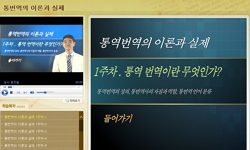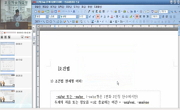This study aims to examine the historical context of the concept of ‘modernism’ in Korean modern literature, especially by comparing to the concepts in Japanese and Chinese literature. In the early 20th century, various branches of modernism liter...
http://chineseinput.net/에서 pinyin(병음)방식으로 중국어를 변환할 수 있습니다.
변환된 중국어를 복사하여 사용하시면 됩니다.
- 中文 을 입력하시려면 zhongwen을 입력하시고 space를누르시면됩니다.
- 北京 을 입력하시려면 beijing을 입력하시고 space를 누르시면 됩니다.

모더니즘, 新感覺派, 现代主义 – 동아시아의 ‘modernism’ 문학 개념에 대한 일 고찰 = A comparative study on the concepts of ‘Modernism’ in East Asian literature
한글로보기https://www.riss.kr/link?id=A103999310
-
저자
김미지 (서울대학교 규장각한국학연구원)
- 발행기관
- 학술지명
- 권호사항
-
발행연도
2015
-
작성언어
Korean
-
주제어
literature in 1930’s ; Guinhoe(九人會) ; translation ; Shanghai Modernism ; Modengzhuyi ; the History of Concepts ; Comparative Literature ; 1930년대 문학 ; 구인회 ; 번역 ; 상하이 모더니즘 ; 모덩주의 ; 개념사 ; 비교문학
-
등재정보
KCI등재
-
자료형태
학술저널
-
수록면
257-288(32쪽)
-
KCI 피인용횟수
2
- DOI식별코드
- 제공처
-
0
상세조회 -
0
다운로드
부가정보
다국어 초록 (Multilingual Abstract)
It needs to be emphasized that the sign and concept of ‘모더니즘’ in Korean modern literature is a consequence of historical and ex post facto progress of criticism. The members of Guinhoe(九人會), which is known that the first ‘modernist’ group in Korean literature, had not named themselves as ‘modernist’ at that time except Kim, Ki rim. And it is also remarkable fact that they refused to be called as ‘新感覺派’. However, the Chinese modernist of Shanghai in the 1930’s has been called ‘新感覺派’ as well as ‘现代主义’, it also has historical contexts and is the result of complicated progress of chines literature. For long period the Shanghai modernist literature has been concealed especially after the establishment of The People's Republic of China until 1980’s. And after 1980’s the modernists of 1930’s had been reinstated in the field of Chinese literature in the category and name of ‘新感觉派(Xinganjuepai)’. However, the position and literary tendency of Shanghai modernist group was different with Japanese ‘新感覺派(Shinkankakuha)’, therefore, recently it is raised a question about the naming of ‘新感觉派’ and ‘现代主义’, for example, newly invented name ‘摩登主义(modengzhuyi)’ has appeared. ‘摩登(modeng)’ has two origin in that sign, the one is from ‘modern’, the western concept and sign’, and the other is from Chinese classical works originated from Buddhist scripture.
The history of concepts and naming of ‘modernism’ in Korean and Chinese modern literature reveals the complicated and unsettled status of East Asian colonial literature.
This study aims to examine the historical context of the concept of ‘modernism’ in Korean modern literature, especially by comparing to the concepts in Japanese and Chinese literature. In the early 20th century, various branches of modernism literature which are sprouted from western literature had been adopted in the East Asian literary field. At first Japanese writers as Yokomitsu Riich announced the literature of ‘new sense(新感覺)’ in the 1920’s, and a full scale movement of modernist literature had been developed before and after the 1930’s. Before long a group of ‘modernist’ appeared in Kyungsung, the capital of colonial Korea and similarly in Shanghai, the semi-colonial city of China. And it is called and written that the former ‘모더니즘’ and the latter ‘现代主义’ in general in these days.
It needs to be emphasized that the sign and concept of ‘모더니즘’ in Korean modern literature is a consequence of historical and ex post facto progress of criticism. The members of Guinhoe(九人會), which is known that the first ‘modernist’ group in Korean literature, had not named themselves as ‘modernist’ at that time except Kim, Ki rim. And it is also remarkable fact that they refused to be called as ‘新感覺派’. However, the Chinese modernist of Shanghai in the 1930’s has been called ‘新感覺派’ as well as ‘现代主义’, it also has historical contexts and is the result of complicated progress of chines literature. For long period the Shanghai modernist literature has been concealed especially after the establishment of The People's Republic of China until 1980’s. And after 1980’s the modernists of 1930’s had been reinstated in the field of Chinese literature in the category and name of ‘新感觉派(Xinganjuepai)’. However, the position and literary tendency of Shanghai modernist group was different with Japanese ‘新感覺派(Shinkankakuha)’, therefore, recently it is raised a question about the naming of ‘新感觉派’ and ‘现代主义’, for example, newly invented name ‘摩登主义(modengzhuyi)’ has appeared. ‘摩登(modeng)’ has two origin in that sign, the one is from ‘modern’, the western concept and sign’, and the other is from Chinese classical works originated from Buddhist scripture.
The history of concepts and naming of ‘modernism’ in Korean and Chinese modern literature reveals the complicated and unsettled status of East Asian colonial literature.
국문 초록 (Abstract)
현재 ‘모더니즘 문학’(한국)이라고 불리는 식민지의 수도 경성의 1930년대 문학(구인회를 중심으로 한)은 그 이름을 얻게 된 역사적 배경과 맥락이 존재한다. 당대에 원어 ‘modernism’과 일...
현재 ‘모더니즘 문학’(한국)이라고 불리는 식민지의 수도 경성의 1930년대 문학(구인회를 중심으로 한)은 그 이름을 얻게 된 역사적 배경과 맥락이 존재한다. 당대에 원어 ‘modernism’과 일본어 음차표기인 ‘モダニズム’의 영향권 안에서 선택된 ‘모더니즘’이라는 음차어가 1930년대의 특정한 문학적 경향, 실천들에 붙게 된 것은 문학사적인 사후 작업의 결과였다. 현재까지 이 명칭은 우리 문학사에서 큰 반성 없이 쓰이고 있는데, 중국의 경우는 사정이 많이 다르다. 중국어의 경우 애초에 음차 표기가 용이하지 않은 사정도 있지만 기본적인 훈역주의의 원칙에 따라 ‘modernism’은 ‘现代主义’로 번역되고 소위 ‘모더니즘 문학’은 ‘현대주의 문학’이 된다. 그런데 중국 현대문학 연구에서 볼 수 있는 또 하나의 경향은 ‘현대주의 문학’과 ‘신감각파 문학’이 거의 동일시된다는 점이다. 일본의 ‘신감각파’ 문학을 직수입한 것으로 여겨져 온 30년대 상해의 일부 작가들이 일본의 ‘신감각파’를 고평하고 적극 소개하기는 했지만 이들을 ‘신감각파’라는 명칭과 범주로 두기에는 부적절하다. 한국에도 일본의 신감각파 작품들이 수입되고 읽혔지만 현재 ‘모더니스트’로 불리는 작가들은 자신들이 ‘신감각파’로 불리는 것을 거부했으며 ‘신감각’이라는 개념 자체를 부정하기도 했다. 한편 ‘신감각파’라는 협소하고 불충분한 개념 또는 ‘현대주의’라는 범박한 개념으로 중국 상해의 30년대 전위 문학을 포괄할 수 없다는 문제의식 하에 최근 중국에서는 ‘摩登主义文学’, ‘Modengzhuyi’라는 새로운 문학사적 명명을 도입하는 시도도 나타났다. 이는 일본의 ‘신감각파’를 ‘Shinkankakuha’로 특수화시키는 영미권의 아이디어와 유사한 면이 있는데, 그러나 ‘摩登’은 ‘modern’이라는 서양 중심적 연원을 완전히 지우지 않으면서도 중국의 전통적인 한자 문맥의 세계와 접속시키면서 보편과 특수의 변증법적 대화의 시도를 놓지 않고 있다는 점에서 특징적이다. 한국과 중국에서 ‘모더니즘’ 문학 개념의 굴절의 역사는 동아시아 식민지 근대 문학이 처했던 흔들리는 위상을 공통적으로 환기시킨다.
참고문헌 (Reference)
1 캐린 맨스드 여사, "茶한잔"
2 김민정, "한국 근대문학의 유인과 미적 주체의 좌표" 소명출판사 2004
3 강신주, "철학적 시 읽기의 즐거움" 동녘 2010
4 황싱타오, "중국에서 ‘현대화’ 개념의 최초 전파와 역사적 계기" 한림과학원 (11) : 85-116, 2013
5 "조선일보"
6 미요시 유키오, "일본 문학의 근대와 반근대" 소명출판 2002
7 김두용, "신시대의 전망 문학 전형기와 명일의 조선문학 (其三)"
8 손유경, "식민지 조선에서 ‘전위’가 된다는 것 (1)" 한국현대문학회 41 (41): 435-464, 2013
9 "별건곤"
10 강인숙, "박태원과 모더니즘" 깊은샘 2007
1 캐린 맨스드 여사, "茶한잔"
2 김민정, "한국 근대문학의 유인과 미적 주체의 좌표" 소명출판사 2004
3 강신주, "철학적 시 읽기의 즐거움" 동녘 2010
4 황싱타오, "중국에서 ‘현대화’ 개념의 최초 전파와 역사적 계기" 한림과학원 (11) : 85-116, 2013
5 "조선일보"
6 미요시 유키오, "일본 문학의 근대와 반근대" 소명출판 2002
7 김두용, "신시대의 전망 문학 전형기와 명일의 조선문학 (其三)"
8 손유경, "식민지 조선에서 ‘전위’가 된다는 것 (1)" 한국현대문학회 41 (41): 435-464, 2013
9 "별건곤"
10 강인숙, "박태원과 모더니즘" 깊은샘 2007
11 정지용, "문인좌담회 - 사조경향 작가작품 문단진영"
12 김기림, "문예좌담회" 1933
13 안용순, "문예작품과 계급의식 김안서에게(3)"
14 윤고종, "문예부흥과 조선"
15 임화, "문단신년의 토픽전망- 시단의 현상과 희망(상) 경향파와 모더니즘"
16 김두용, "문단동향의 타진-구인회에 대한 비판(1)"
17 임인생, "모던이씀" 25 : 1930
18 페터 지마, "모던/포스트모던" 문학과지성사 2010
19 M. 칼리니스쿠, "모더니티의 다섯 얼굴" 시각과언어 1994
20 김기림, "모더니즘의 역사적 위치" 1939
21 "동아일보"
22 김종훈, "동아시아 ‘신감각파’의 출현과 전개 양상" 한국시학회 30 (30): 31-55, 2011
23 앙트완 베르만, "낯선 것으로부터 오는 시련" 철학과현실사 2009
24 김은전, "구인회와 신감각파" 서울대학교 국어교육과 24 : 1996
25 권 은, "경성 모더니즘 소설 연구 : 박태원 소설을 중심으로" 서강대학교 2013
26 백철, "邪惡한 藝苑의 분위기(하)"
27 "詩と詩論(일본)"
28 "行動(일본)"
29 "現代(중국)"
30 张勇, "现代主义抑或摩登主义?—论新感觉派作家文学实践的特性" 2 : 2007
31 吴福辉, "施蛰存作品新編" 人民文学出版社 2009
32 严家炎, "新感觉派小说选" 人民文学出版社 2011
33 "婦女界(일본)"
34 李今, "从理论概念到历史概念的转变和考掘—评 『摩登主义:1927—1937上海文化与文学研究』" 3 : 2011
35 阿部知二, "主知的文学論(現代の芸術と批評叢書 第19編" 厚生閣書店 1930
36 李歐梵, "上海摩登-一种新都市文化在中国" 人民文学出版社 2010
37 梁荣春, "“摩登”杂说" 6 : 1995
38 Keene, Dennis, "Yokomitsu Riichi : Modernist" Columbia Univ. press 1999
39 Xie, Z, "On the Transformation of Oscar Wilde’s SALOME in Modern Chinese Fiction" 2013
40 채호석, "20세기 한국문학의 반성과 쟁점" 소명출판 1999
41 홍효민, "1934년과 조선문단(2)"
42 손정수, "1930년대 한국 문학비평에 나타난 모더니즘 개념의 내포에 관한 고찰" 일지사 23 : 1997
43 신범순, "1930년대 시에서 니체주의적 사상 탐색의 한 장면(1) - 구인회의 ‘별무리의 사상’을 중심으로" 인문학연구원 72 (72): 11-58, 2015
동일학술지(권/호) 다른 논문
-
- 한국현대문학회
- 황종연(Hwang, Jongyon)
- 2015
- KCI등재
-
- 한국현대문학회
- 손성준(Son, Sung-Jun)
- 2015
- KCI등재
-
- 한국현대문학회
- 문광훈(Moon, Gwang-hun)
- 2015
- KCI등재
-
- 한국현대문학회
- 나병철(Na, Byung-chul)
- 2015
- KCI등재
분석정보
인용정보 인용지수 설명보기
학술지 이력
| 연월일 | 이력구분 | 이력상세 | 등재구분 |
|---|---|---|---|
| 2026 | 평가예정 | 재인증평가 신청대상 (재인증) | |
| 2020-01-01 | 평가 | 등재학술지 유지 (재인증) |  |
| 2017-01-01 | 평가 | 등재학술지 유지 (계속평가) |  |
| 2013-01-01 | 평가 | 등재학술지 유지 (등재유지) |  |
| 2010-01-01 | 평가 | 등재학술지 유지 (등재유지) |  |
| 2008-10-10 | 학술지명변경 | 외국어명 : The Journal of Korean Modern Literature -> The Journal of Modern Korean Literature |  |
| 2007-01-01 | 평가 | 등재학술지 선정 (등재후보2차) |  |
| 2006-01-01 | 평가 | 등재후보 1차 PASS (등재후보1차) |  |
| 2004-01-01 | 평가 | 등재후보학술지 선정 (신규평가) |  |
학술지 인용정보
| 기준연도 | WOS-KCI 통합IF(2년) | KCIF(2년) | KCIF(3년) |
|---|---|---|---|
| 2016 | 0.72 | 0.72 | 0.75 |
| KCIF(4년) | KCIF(5년) | 중심성지수(3년) | 즉시성지수 |
| 0.84 | 0.91 | 1.388 | 0.16 |




 KCI
KCI






